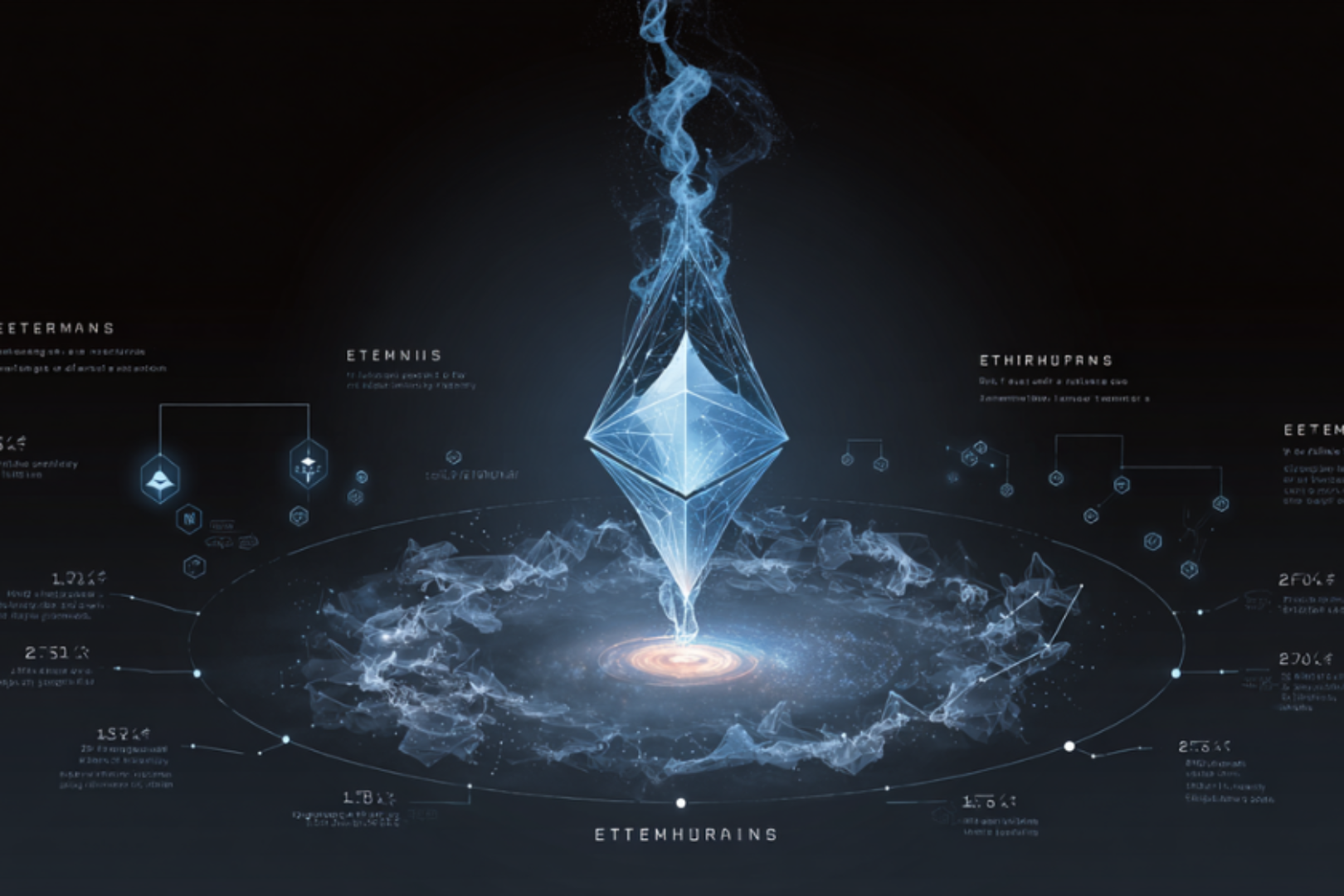
Original title: endoftheworld.txt: Crypto x AI
Original author: Accelxr
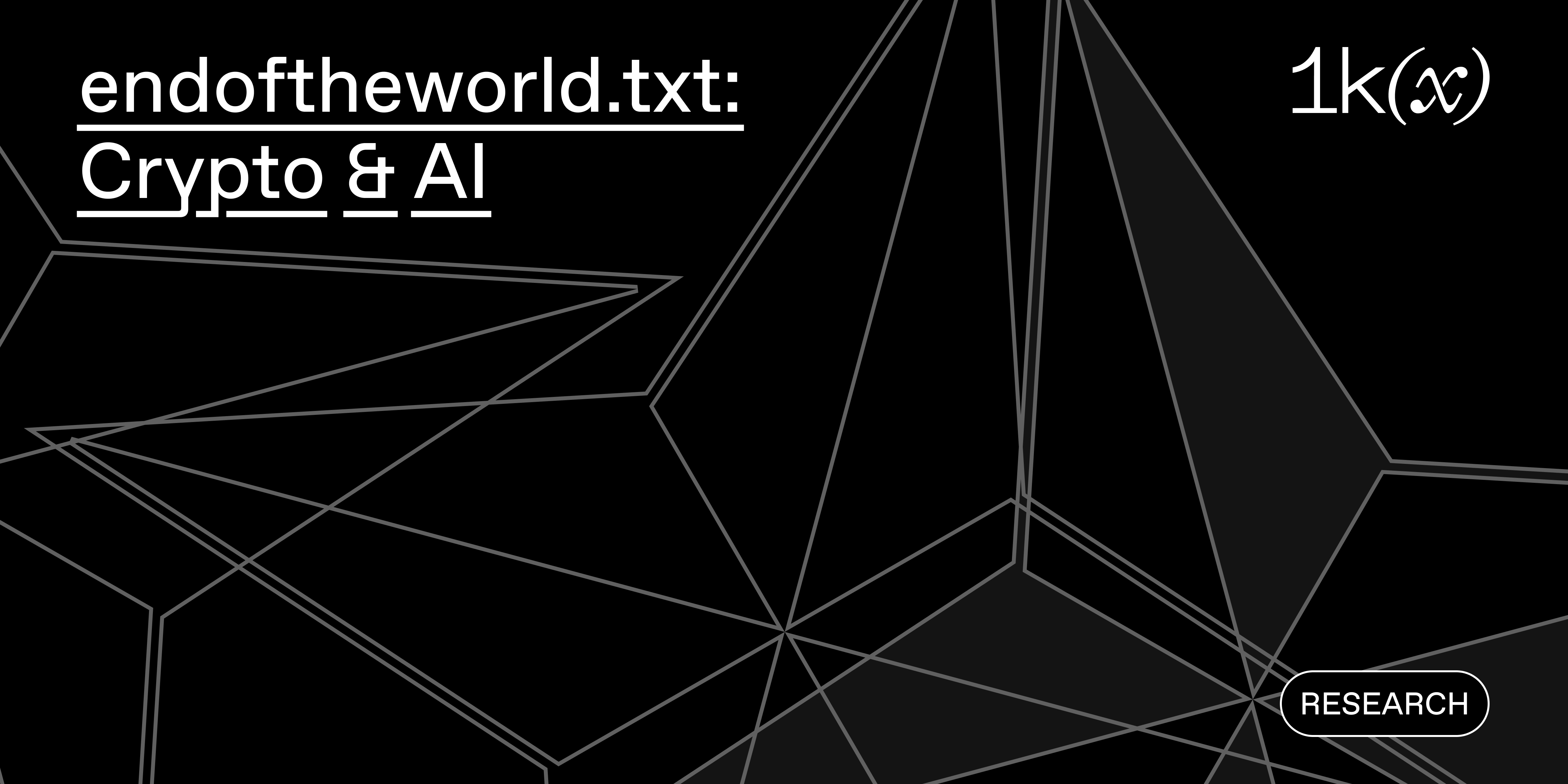
Artificial Intelligence is an accelerating technology that will dramatically alter social trends while transforming economies, reshaping industries, and providing new forms of online interaction.
Although many people believe that Crypto’s intrusion into the world of artificial intelligence is unnecessary, we believe that it is a crucial synergistic relationship. As restrictions on the production and distribution of AI models tighten, a fast-paced, anti-authoritarian open source community is rapidly emerging, taking on well-funded centralized schemes and governments. Crypto is by far the best tool for raising funds and managing open source tools, as opposed to external pressure. Thats an ideal match, and thats before taking into account the impact of AI on authenticity, provenance, identity and other areas that Crypto has inherent strengths in remediating or improving.
There are all kinds of rabbit holes worth exploring here, and this article attempts to cover as much ground as possible, so this article can be seen as a stormy overview of some of the emerging areas of Crypto x AI so far and in the foreseeable future. .
creativity
The first wave of interest in artificial intelligence in recent times has been in the field of idea generation tools. Generative AI reduces users reliance on technical skills such as programming or advanced software proficiency, allowing anyone with basic electronics experience to produce complex works while outputting professional work at the lowest cost.
This could have a huge impact on the creative industries, to name a few:
Now, anyone can become a creator, and as the number of scenarios in which people create works together with these tools becomes more and more mature, the creative model of multiplayer games will flourish like never before.
Niche communities are able to produce high-quality work that previously would have limited commercial viability due to audience size.
There will be an influx of generative content that will far outpace human work, leading to a potential revaluation of human content online.
The following is a discussion of some innovative media that are highly interactive with AI.
Art
“AI art is not art” is a common slogan among those stubbornly opposed to the rise of AI tools. The release of the generative model was quickly met with backlash and protests, such as what we saw on ArtStation. However, it has sparked some of the most interesting creative vertical subfields in web3.

AI art comes in many forms, most notably the currently popular generative models, including DALL-E, Stable Diffusion, and Midjourney. There are also web3 competitors like ImgnAI that are committed to providing users with a better social experience around generative image creation driven by token economics, which is much needed to build community moats around these generative models.
However, AI artists who are highly regarded in this field often engineer and fine-tune their models in a more unique way, resulting in more unique works than through simple prompts. This might require training new embeddings, or using LoRAs to perfect a certain style, or even building your own model entirely.
Popular artists using more complex and personalized models to release AI art as NFTs include Claire Silver, Ivona Tau, Roope Rainisto, Pindar van Arman, Refik Anadol, Gene Kogan, and more. These artists have explored the use of various marketplaces for distribution, most prominently AI art-specific marketplaces such as Braindrops, Mirage Gallery, and FellowshipAI, as well as event platforms dedicated to the art form such as Bright Moments.
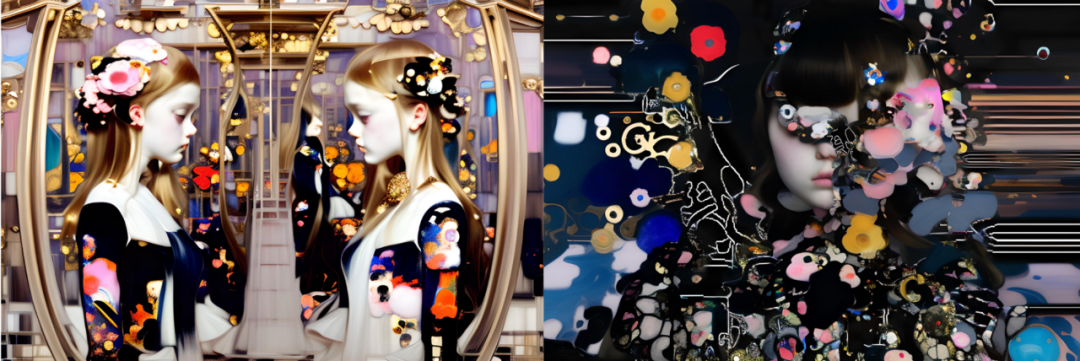
Vertical subfields of AI art have also been formed, such as post-photography and data art. Post-photography art is mainly composed ofFellowship.aiThe team is pushing, through collaboration with Roope Rainsto, to bring more artists exploring this medium into the public eye. Much of post-photographic aesthetics strives to embrace the visual artifacts common in early generative tools. With the publication of Roope Rainistos Life in West America series on Braindrops, post-photographic art has begun to receive increasing attention on social media.
Regarding data art, Refik Anadol is a well-known artist in the field, known for his immersive installations that use data, algorithms, and artificial intelligence to create dynamic and interactive artworks. There are some interesting examples in his work, such as Unsupervised, which transforms MoMAs metadata into a work that generates new forms in real time. Another example is Sense of Place, which uses real-time environmental data such as wind, temperature and humidity, as well as signal data from Bluetooth, Wifi and LTE to provide data sources for the work.

Another interesting vertical subfield is the new content media enabled by Crypto’s features: autonomous artists on the chain. The most famous example is Botto, a community-governed generative artist that creates 350 pieces of art every week in rounds, each of which contains multiple individual fragments. ). Each week the BottoDAO community votes on these shards, using their aesthetic preferences to guide Bottos generation algorithm for future art creation, ensuring that artworks develop under the influence of the community over time. Each week, that voted shard is minted and auctioned on SuperRare, with proceeds returned to the community. After completing the Fragmentation and Paradox Periods, Botto is currently in the Rebellion Period, integrating new technologies such as Stable Diffusion 2.1 and Kandinsky 2.1, and in each of its Explore collaborations and curated collections in weekly rounds. Botto is one of the highest paid artists on SuperRare and has even amassed his own collector DAO called CyborgDAO. Also, likev 0 Such projects are also exploring the integration of token economics and AI art models, aiming to provide a place for multiple artists to create their own on-chain art engines and be governed by the holder community.
When interviewing AI art collectors of any form, the most common retort from the crypto space is that artist curation reduces their interaction with the blockchain, unlike more classic generative art (Art Block). Rather than being random from chain-specific inputs, these outputs are chosen by the artists themselves and permuted multiple times before being implanted into the collection. Although this is a digitally native art-making process, it must be wound manually.
Fully on-chain AI art is difficult due to the limitations of the execution environment and the computational complexity of the image generation models used. Some examples of lightweight output, such as Pindar van Armans byteGANs, are stored on-chain, but we expect that for more complex models the closest available form in the short term will be off-chain verification mechanisms. For example, Modulus Labs recently partnered with Polychain Monsters to build a zkML-validated GAN model for generating collectible pixel monsters. Using zk proof, each generated NFT can be cryptographically verified as coming from an actual Polychain Monsters art model, which is a huge step forward for AI art.
music
Outside of image-based art, a major movement is brewing in music. The success of ghostwriters AI Drake hit song seems to be well known by now. Within 2 days, it accumulated more than 20 million traffics and was quickly banned by UMG. This short-lived phenomenon made the public aware that the relationship between the artist and the work itself was undergoing a fundamental change.
Within a few years, generative music will undoubtedly surpass music created by humans. Boomy is a generative music startup founded in late 2018. Its users have created nearly 14% of the worlds recorded music (approximately more than 14 million songs) in a short period of time. This was just for this one platform, and that was before the recent surge in public interest.
Given that generative content will exceed works created by humans, and the use of speech models will make it more difficult to authenticate works, that is, how to determine that the work was created by the artist, artists will need authenticity verification. Of course, the best way to publish and verify the authenticity of an artistic medium is through cryptographic primitives.
It’s worth noting, however, that this isn’t all bad for artists, especially those willing to embrace this inevitable trend. Holly Herndon is an innovator of the open voice model, empowering her community (Holly+) to create and distribute works using her voice. Hollys claim at launch was simple:
“While the differences between pirated and official speech models may be small at this point, as more sophisticated and realistic speech generation capabilities improve, user demand for more comprehensive and higher-fidelity sound training data, and The need to identify sources will also increase. For these reasons, I believe official, high-fidelity voice models of public figures will become a necessity, so why not give them a try?
The DAO oversees the Holly+ voice model and can vote on the creation and approval of new works. Token holders of the DAO have an incentive to ensure that only high-quality work is approved to prevent devaluation due to poor art or negative connotations. The voice model will be used to produce a limited number of official artworks, and DAO token holders will receive ongoing profits from the resale of these works.
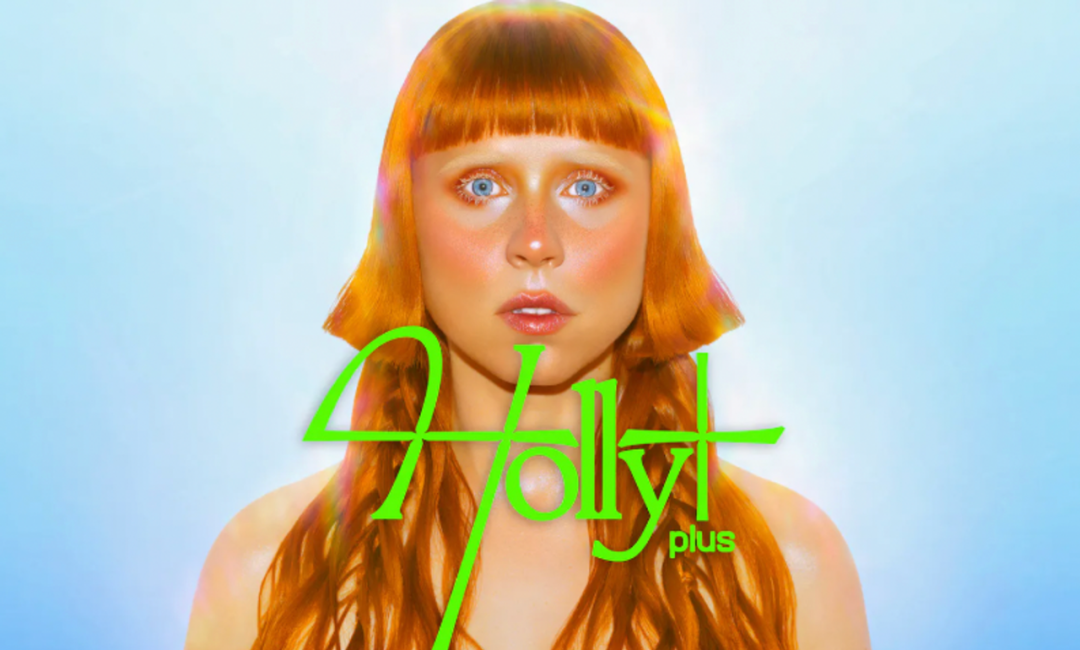
Recently Grimes launched elf.tech, a platform that allows artists to use GrimesAI voiceprints in their original songs. After obtaining Grimes approval, they need to share 50% of the royalties with Grimes. Elf.Tech is powered by CreateSafes AI and works with TuneCore to facilitate professional distribution and ensure proper royalty management. If the final form of the music is an on-chain NFT, profit distribution is handled via fiat currency or through an automated on-chain royalty split. Hume is a web3 music studio focusing on virtual artists. It is one of the first companies to use the Grimes model to release Grimes AI in collaboration with its virtual artist angelbaby.
Fashion and physical goods
I have previously explored the concept of generative manufacturing of physical consumer goods and fashion products using creative programming algorithms and artificial intelligence in this post:https://mirror.xyz/1kx.eth/oBuaEp 5 jgGbe 2 gCsa 6 Z-_mLAeMRUhsIdZsaScHQNXS0。
In short, generative AI and creative programming create the prerequisites for a hyper-personalized future of products and user experiences, allowing us to create unique designs, patterns and art based on our personal preferences. This technology can be applied in everything from fashion to home décor, and further exploits its advantages by allowing users to fine-tune the output to their liking. New manufacturing tools often allow us to connect code directly to machines to automate output production, fundamentally solving many of the technical bottlenecks in manufacturing personalized goods.
Web3 projects currently exploring this area include Deep Objects, RSTLSS, and Little Swag World. It’s worth pointing out that most digital fashion projects will likely explore generative creative tools and media, with Draup, Tribute Brand, and others discussing its use in detail.
Community-created model output similar to Botto is an interesting idea Deep Objects is exploring. They used a community curation engine to reduce the 1 million designs generated by the GAN AI model into a single community-selected piece. This final piece will now be 3D printed in a showcase of generative product creation. DeepObjects can easily extend this kind of curation design to other physical goods as well.
RSTLSS has teamed up with AI artist Claire Silver to launch a work called Pixelgeist, in which each casting includes, in addition to the artwork itself, a digital costume featuring the artwork, a game avatar with the costume, and Purchase the rights to the corresponding physical work. This unique fusion of digital physical fashion and AI output is one of those interesting experiments that brings gaming, fashion, and AI together. Claire Silver also tackles fashion photography with her latest series, made possible on Braindrops. For more information on the topic of digital fashion, see my articles:https://medium.com/1kx network/augmenting-culture-the-emerging-field-of-digital-fashion-bead 627 c 8 dcd。
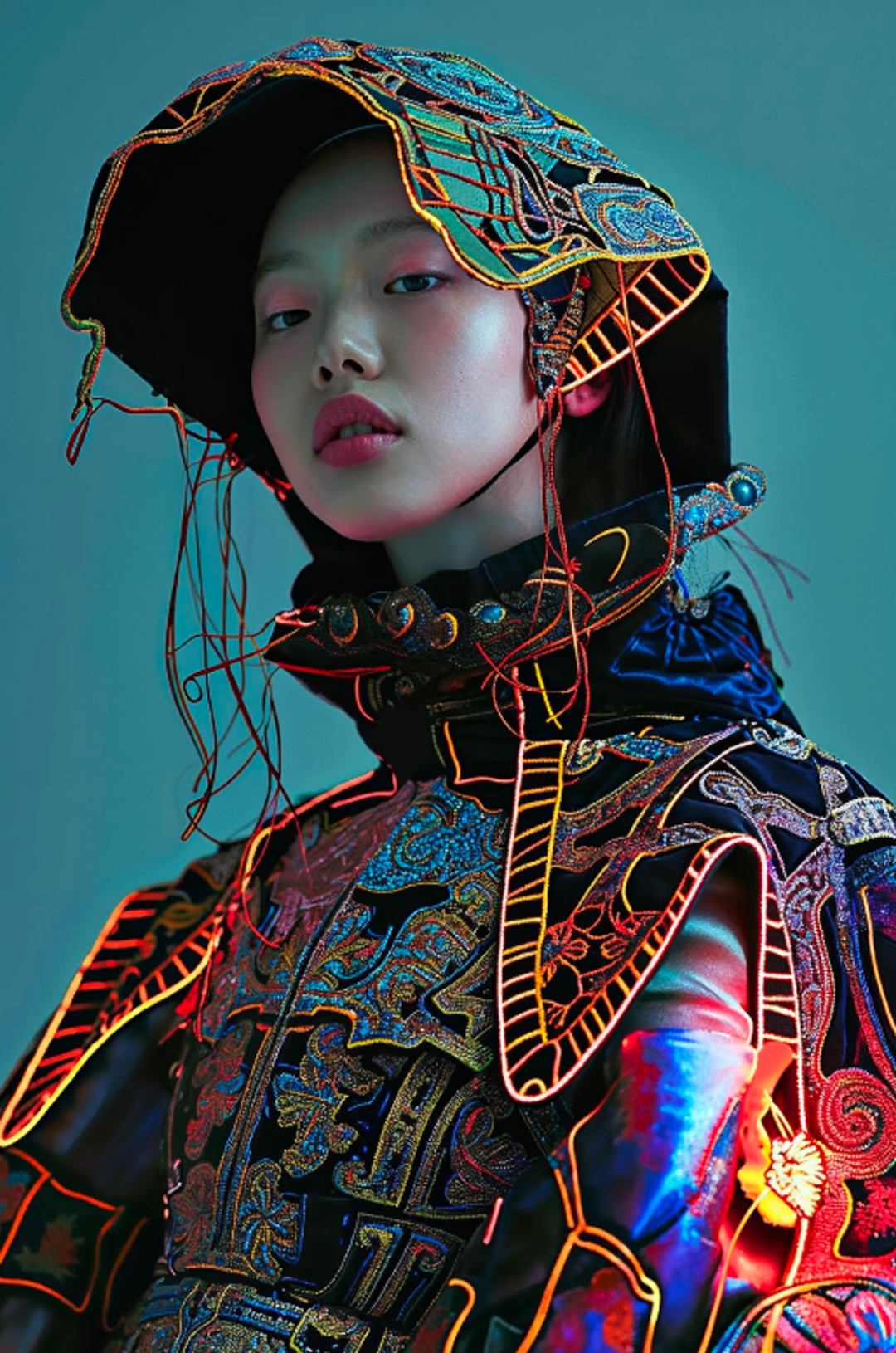
Little Swag World is a great example of using GAN models in the creative workflow, from design to physical product. Bosch, the artist behind the project, built the initial design himself and then ran it through Stable Diffusion/Controlnet to produce a unique, surreal piece. This technology achieves a high degree of aesthetic consistency, and the next step in the project is to combine these generative models with ceramics to create AI-enhanced NFT physical goods.
All in all, we expect a lot of exciting Crypto x AI projects to emerge, from decentralized brands curating generated products to divisible NFTs for AI agent designers.
entertainment
After the initial hype surrounding Nothing Forever, generative entertainment has also become more fully developed. Nothing Forever is a generative interactive animated sitcom based on Seinfeld that runs 24/7 live on Twitch. Interestingly, it demonstrates the power of the medium, with the shows narrative changing based on Twitch chat replies and allowing donors to import their likeness as a character into the show.
Simulation from Fable extends this research with SHOW-1, a model for prompt-generated television shows in which writing, animation, directing, voice acting, and editing are all implemented via prompts. They first demonstrated this on an episode of South Park, but it can be easily expanded to any IP. I very much expect more permissionless forms of IP to experiment more with this type of content creation tool, as weve seen with web3.
Upstreet has also recently started experimenting with generative TV programming, using the AI agent model they developed for their virtual world platform (more on that below), allowing creators to add their own VRM avatars and create unique interactions and skits through prompts.
Another area of concern is intellectual property. Projects like Story Protocol are looking into using decentralized IP registries to facilitate the creation, distribution and monetization of IP. This is useful for creators, it is smoother than traditional IP licensing, and is particularly unique in the era of generative AI. NFT IP, memes and other entertainment projects can be authorized and paid copyright fees to generate various derivatives, which can greatly unlock the value amplification of creators works.
Are you a robot?
We may soon be facing a problem: deepfakes. Examples include chatbots trained on influencers to interact with their fans, and generative spam on social media, to name a few. Soon it will be crucial to verify who the real human beings are.
Web3 has put a lot of effort into preventing witches (although the problem has not been eradicated). However, reputation systems, personality certification mechanism designs, user passports, soul-bound NFTs, and the entire token economy are all working to solve this problem.
Authentication Hardware, zkML, and Proof of Personality
I previously discussed the practical implications and potential use cases of zkML in detail in this post:https://mirror.xyz/1kx.eth/q0s9RCH43JCDq8Z2w2Zo6S5SYcFt9ZQaRITzR4G7a_k。
There are multiple teams, such as Modulus Labs, EZKL, and Giza, that focus more on using zk to prove the reasoning of the model. These efforts to use ZK to verify model output have broad applications and enable new experiments in DeFi, identity, art, and games to use these models in a trust-minimized manner.
While there are countless projects focused on personality proof, one of the most interesting applications is undoubtedly Worldcoin. Worldcoin uses an AI model to convert iris scans into short hashes so that they can be easily cross-checked to verify similarities or conflicts in the event of a Sybil attack. Because each iris is unique, the model is able to determine that the user is real and unique. It uses a trusted hardware setup (that highly recognizable sphere) to ensure that the model only accepts cryptographically signed input from its camera.
Likewise, the zk micophone team demonstrated how to use certified microphones to create and digitally sign audio content to verify the authenticity of the recording. The key is stored in the microphones secure area, which is signed to guarantee the authenticity of the recorded audio. Since most recordings are processed or edited, audio editing software powered by SNARK enables audio conversion while still proving the source of the audio. Daniel Kang also collaborated with Anna Rose and Kobi Gurkan on a proof-of-concept for certified recordings.
forever influencer
The flip side of verifying personality or human-created content is embracing the possibility of deepfakes. Similar to the voice cloning model above, some influencers choose to create chatbots to engage their audience. One famous example is Caryn Marjorie, who launched an AI girlfriend product using her voice and trained on thousands of hours of YouTube videos to perfectly capture her personality, mannerisms and voice. For $1 per minute, users can chat with her avatar in a private Telegram channel, sending and receiving voice messages with her likeness. In the first week of launch, Caryn Marjorie made $72,000 and as subscriptions grow, she is expected to earn over $5 million per month.
CarynAI is just one example of an AI girlfriend product (see below for more introduction). Imagine that you can play games with the AI model of your favorite game anchor, have real-time conversations, and simulate a real experience; or, KOL can use Anthropomorphic AI+ avatars that can be licensed for use in fashion shows or publications, etc.
˚✧₊⁎( ˘ω˘ )⁎⁺˳✧༚ Uwu-ral Networks is so kawaii(ノ◕ヮ◕)ノ:・゚✧*
An indisputable reality is that 79% of adults aged 18 to 24 report feeling lonely; 42% of those aged 18 to 34 report feeling “forgotten” “all the time”; 63% of men under the age of 30 Consider themselves single, compared with 34% of women in the same age group; only 21% of men say they have received emotional support from friends in the past week.
People are lonely. In an era where loneliness is increasingly prevalent, especially among young people, the emergence of artificial intelligence companionship offers a unique, if slightly dystopian, solution. AI companions are always available, judgment-free and highly personalized. They can serve as therapists or outlets for desires. They can be creative colleagues or lifestyle coaches. They are always waiting to talk to you about anything you want.
The infrastructure to do this could be: fine-tuning the model using personality cues to outline behavior, appearance, traits, communication styles, etc. The output of running the model through vocal models such as elevenlabs. Generate selfies on request using the image generator model and defined appearance hints. Generate an appropriate vrm avatar and place it in an interactive environment. Well, you now have a hypermedia companion thats perfect for you. If you integrate Crypto, you will be able to make them ownable, tradable, rentable, etc.
companion
The setup above can be achieved entirely through DIY, but you can also use apps that are specifically designed for this concept. Replika is the most famous example, which allows us to communicate in real time with a virtual partner without any technical skills. These apps typically operate on a subscription model, with users paying to interact with their virtual companions. Not only are such products profitable, but they also demonstrate the huge impact this trend has on human psychology: for example, one post on Reddit showed a persons conversations with a virtual partner for 2,000 consecutive days, and we also saw Proposals, AR selfie creations, and more. Heres an interesting tidbit: When porn was removed from the platform, subreddit moderators had to pin the suicide hotline at the top of the community to appease agitated community members.
Role-based platforms are also beginning to emerge, which provide users with a way to use multiple roles (often also on a subscription model). Although inCharacter.aiandChub.aiThere are many ready-made characters to choose from on other platforms, but the real novelty lies in making your own characters or scenes entirely through character prompts + feedback training.
Many web3 projects have made some attempts to provide these companion experiences, such as Belong Hearts, MoeMate, and Imgnai.
Belong Hearts has pioneered a novel NFT minting gameplay that allows users to chat with the character they provide until the user gets her phone number so that she can be whitelisted for NFT minting. Once received, the NFT allows the user to enjoy a chat experience with the character, including erotic role play as well as the resulting selfie. While the future direction of the product is yet to be determined, theres a lot of discussion surrounding tokenomics as a mechanism for players to gift items or tokens to the chatbot to affect her mood and relationship levels.

Created by the team behind Webaverse, MoeMate offers both desktop and browser versions of the application, allowing users to easily import vrm models that can then be given personality and interact with. The desktop version is reminiscent of a previous AI assistant called the old-school paperclip assistant.
Theres also Imgnai, which in addition to being the high-quality image generator model mentioned above, also solves the problem of anthropomorphizing the Nai character with a fully integrated chatbot experience.
Ultimately, the potential for tokenomics abounds in the companion space, with tokenized APIs, tradable personality prompts (see below), on-chain in-game currencies, proxy payments, tradable trinkets, role-playing mechanics, and token-restricted access Scenarios such as these are only a small part of the potential scope for future exploration.
Personalized market
Interestingly, the rise of companion apps has also given rise to the rise of standardization of personality prompts, as well as platforms for exchanging personality primitives. The field is likely to move toward the financialization of high-quality prompts and scenarios. For example, if an uncensored open source LLM could read metadata from an NFT containing a standardized personality, then the personality NFT could benefit from the royalties generated therefrom to benefit its creator.
But this also raises another unresolved question: since many top models are restricted by NSFW content, it is necessary to create viable open source models, which is a perfect opportunity for token-based crowdfunding and governance.
You can check out this article I wrote to get a deeper understanding of some of the ideas mentioned in this chapter:https://medium.com/1kx network/virtual-beings-51606 c 041 acf。
Enhance governance
The history of DAO governance is actually the evolution of a long history of human collaboration. Ultimately we discovered that it is extremely difficult to organize resources effectively, minimize governance bloat, eliminate fishing, and identify soft power inefficiencies or bottlenecks.
Experiments using AI as an enhancement layer for DAOs are just beginning, but their potential impact is far-reaching. The most common form is the use of trained LLMs to help direct labor capital within the DAO toward more efficient matters, identify issues in proposals, and open up wider participation in contributions and voting. There are also simpler tools, such as AwesomeQA, which improve the efficiency of DAOs through search and automatic replies. Ultimately, we expect that autonomous in DAOs will become more important over time.
Autonomous Councils and Voting Agents
Upstreethave applied multi-agent systems (such as AutoGPT, etc.) to their governance process as an early experiment. Each agent is defined by a subgroup of the DAO, such as artists, developers, BD strategists, PR, community managers, etc. These agents are then tasked with analyzing proposals from contributors and discussing their pros and cons. Agents are then scored based on their impact on their respective scopes, and the scores are aggregated. Human contributors can evaluate their discussions and score before voting on the outcome, so essentially it provides a diverse parallel review service.
This is particularly interesting because the process can surface aspects of a proposal that humans might have missed, or enable humans to debate with the AI agent about its subsequent implications.
Advanced coordination system
MakerDAOSimilar topics have been discussed in detail to achieve the goal of autonomous governance decision-making with minimal human input. They completed an overview of Atlas, which depicts a real-time data hub that contains all things related to Maker governance. These data units are organized in the form of a document tree, which provides context to prevent misinterpretation. Atlas will be in JSON format and standardized to make it easier for AI and programming tools to use it.
Atlas can be used by various Artificial Intelligence Governance Tools (GAIT) that engage in governance by automating interactions and prioritizing participant tasks. Example use cases include:
Project Bidding: GAIT can streamline the process for ecosystem participants to bid for projects by handling paperwork and ensuring proposals meet strategic goals.
Monitor rule violations: GAIT can help monitor deliverables and rule compliance, flagging potential issues for human review.
Professional advice integration: GAIT can transform professional advice into formatted proposals, bridging the gap between governance and expertise.
Data Integration: GAIT can easily integrate new data and experience, helping the DAO learn and adapt to new situations without repeating mistakes.
Linguistic Inclusion: GAIT can act as a translator so governance can be conducted in multiple languages, thereby fostering a diverse and inclusive environment.
SubDAO: Atlas and GAIT can be applied to SubDAO, allowing experimentation and rapid development, and the ability to learn from failures.
🧠 <> 🎮
The area of Crypto x AI that Im particularly excited about is gaming. There are many novel games to explore in this field, such as procedural content games, generative virtual worlds, LLM-based narratives, cooperative games where AI agents cooperate with each other, and so on.
While there are many good examples of new games in web2, here well focus on examples from web3. It is worth mentioning that this academic article Generative Agents: Interactive Simulacra of Human Behavior has awakened many people to explore the possibility of multi-artificial agent game environments. Researchers from Stanford University and Google demonstrated this potential by applying LLM to agents in a sandbox gaming environment. LLM-powered agents exhibit impressive behaviors including spreading party invitations, establishing friendships, dating, and coordinating everyone to get to parties on time, etc., all based on a single user-specified recommendation. The approach leverages an architecture that extends LLM to store and synthesize higher-level feedback, allowing agents to achieve more dynamic behavioral planning.
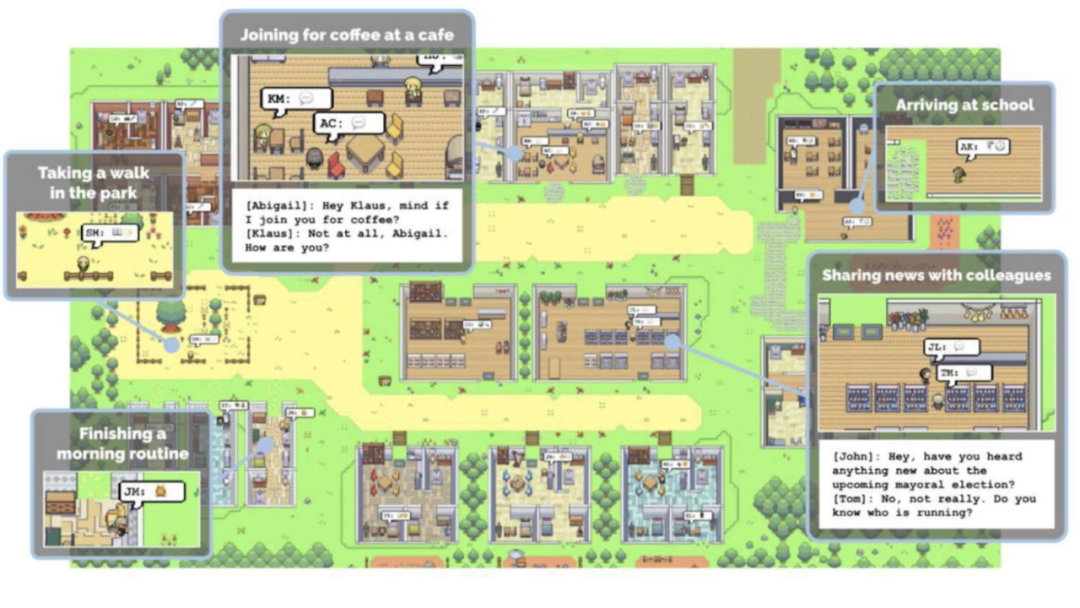
This research is the basis for the most explored (but still experimental) game in web3 to date. The core idea is how we can use AI agents with a high degree of autonomy or characteristics in simulated environments and build fun and engaging games around them.
Parallel Colony from the Parallel TCG team explores this concept by having AI agents collect resources and tokens for players in the game. Using the ERC-6551 standard, AI agents are NFT wallets that can conduct transactions in the game on behalf of users. AI agents can create, mint, and store new game items, and also have personalities defined by fine-tuned LLMs created by the team, giving them non-standardized behaviors and traits that can influence their actions in the game.
Conceptually, though, the most intriguing AI agent-based game is Upstreet. Upstreet is a virtual world project with some crazy ideas like an AI agent SDK, procedural tasks, browser + VR, drag-and-drop interoperability, and social features in an environment called The Street where players can build their own experience and interact with them. In addition to players, there are artificial intelligence agents that developers (and players) can deploy with personalities and goals that influence the game environment. Most interesting is their research and development of the AI Director, an AI agent that decides a goal, such as parachute from the tallest building or start a new religion, in which the user and agent participate as challengers . The Director determines the winner at the end of each round, rewarding players and agents with prizes, tokens, and NFTs. This could lead to very interesting and complex agent-player interactions, and we are very excited to see its development. In particular, it could directly lead to high-value 3D environment research and data for more advanced models in the future. According to the data, OpenAI also seems to be interested in acquiring open source Minecraft-style games.
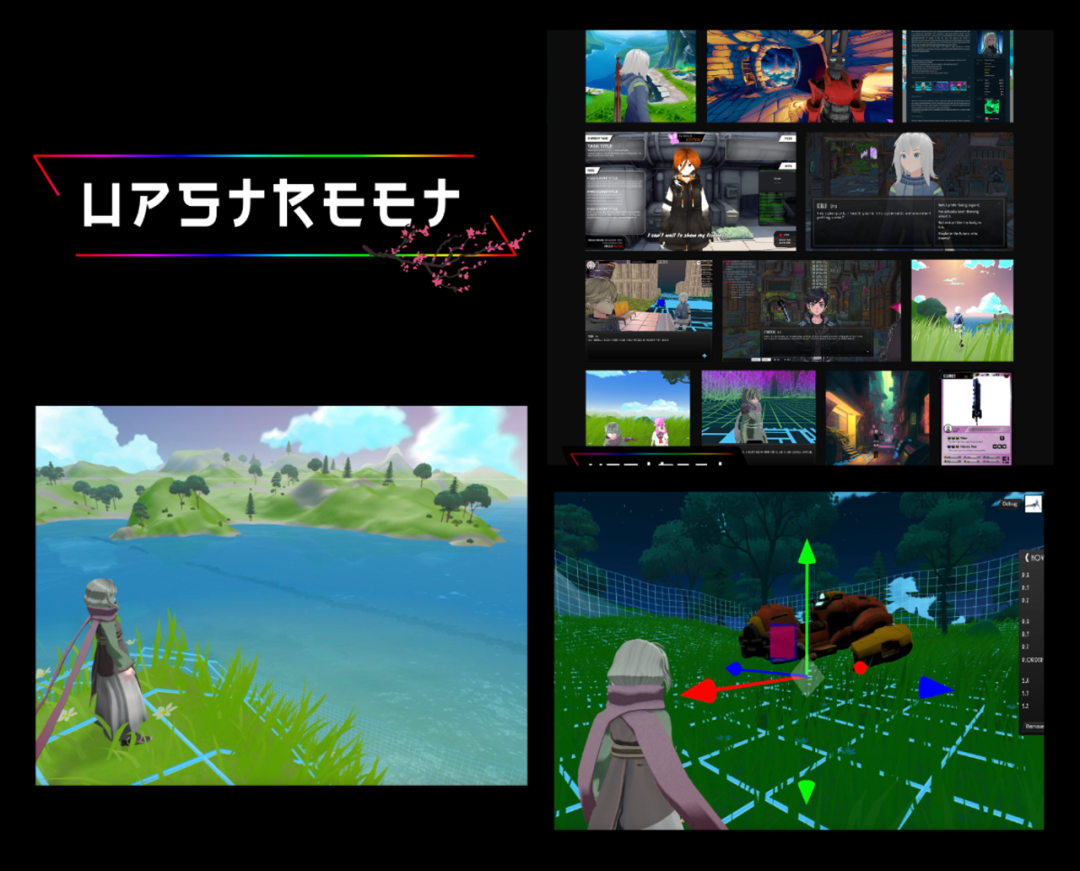
Generating tools for creating virtual worlds is another area of enhanced gaming. For example, Today lets players design their own virtual island and take care of AI NPC companions. Particularly unique is their use of generative creative tools to facilitate the development of in-game UGC. Since the game is primarily based on these user-created islands, its important to provide silky asset development opportunities for players without 3D game development or art skills. Arguably, much of the lackluster nature surrounding Metaverse-style gameplay is due to a lack of content, and in the short term, this can be remedied precisely through the use of generation tools.
AI agents require training, and training itself can become a fun game for players to explore. AI Arena provides a novel AI agent training method that allows players to play Super Smash Bros-style games and slowly teach AI agents to participate in competitions through imitation training. Because the AI agent doesnt need to rest, it can play competitive tournaments around the clock against an always-active pool of competitors to earn prizes, while players can fine-tune their playstyle asynchronously. This turns training into a game and amplifies its effectiveness through token economics.
Large-scale cooperative gaming between humans and powerful AI players has been possible in the past, but with the integration of token economics, it is taken to a new level. Leela vs. the World from Modulus Labs is an experiment in this type of game format. In this experiment, Modulus uses the Leela chess engine and verifies its output through the zk circuit. Players can invest money to bet on the game between humans and artificial intelligence, thus forming an interesting prediction market. Although the verification time of this model will be long considering the current state of zk, it undoubtedly opens up the possibility of e-sports prediction markets and verifiable and complex AI player governance mechanisms based on large-scale collaboration.
Finally, pure chain games or autonomous worlds will also be enhanced by artificial intelligence. Most striking on this topic are large knowledge models (Large Lore Models), which focuses on using the LLM protocol layer to create persistent knowledge that can interoperate in modifiable and interconnected game environments. Player actions affect multiple game environments simultaneously in an autonomous world and therefore should carry more High-dimensional knowledge to facilitate storylines. This is ideal for building abstract LLM layers in multi-chain gaming environments.
infrastructure
AI x Crypto infrastructure deserves a separate article in itself, but here I’ll briefly touch on some of the ideas we’re seeing taking shape.
Distributed Computing
To understand the computational requirements of a cryptoeconomic system, one must first understand the core problem. To date, there is a huge bottleneck in GPU capacity, with wait times of up to a year for the best hardware, such as the H 100. Meanwhile, startups are raising huge sums of money to buy hardware, governments are scrambling to procure it for defense purposes, and even the best-funded teams like OpenAI are having to pause feature releases because of limited computing power.
Many teams focused on decentralized computing and DePIN see an opportunity here: bootstrap permissionless clusters to meet demand while providing crypto incentives and minimum profits to make the network highly competitive on pricing with web2 peers, while providing the hardware Suppliers offer better returns.
Machine learning can be roughly divided into four major computational workloads:
Data preprocessing: Prepare raw data and convert it into a usable format.
Training: Let ML models train on large datasets to learn patterns and relationships in the data.
Fine-tuning: ML models can be further optimized using smaller datasets to improve performance on specific tasks.
Inference: Run the trained and fine-tuned model to make predictions.
Weve seen things likeRenderandAkashIn this way, more general computing networks are turned to serve more specialized computing, such as AI/ML. For example, Render has leveraged providers built on top of their network such asio.netTo serve AI customers more directly, vendors like Akash have begun to bring in hardware vendors who own the demand and demonstrate the power of the network by directly training their own models. The first case is a model that is only available on uncopyrighted materials. Stable Diffusion fork trained on.Livepeerare also focusing on AI video computing as they already have a large network serving video transcoding use cases.
Additionally, a network dedicated to AI computing is forming, which leads us to the realization that core challenges around collaboration and validation can be more directly addressed by building chains or models around AI. One of the more notable examples is Gensyn, which built a substrate-based L1 designed for parallelization and verification. This protocol uses parallelization to split larger computing workloads into tasks and push them asynchronously to the network. To solve the verification problem, Gensyn uses probabilistic proof-of-learning, graph-based pinpoint protocol, and incentive system based on staking and slashing. Although the Gensyn network is not yet live, the team predicts that the hourly cost of an equivalent V1 00 GPU on its network will be approximately $0.40.
Beyond storage, alternative training models are also emerging, such as federated learning, which is enjoying a renaissance in web3 after realizing that blockchain can more appropriately incentivize these models. In short, federated learning is a method in which multiple parties train a model independently and periodically batch updates and send them to the global model. There are many practical examples, such as Google’s keyboard text prediction algorithm. In web3, FedML and FLock are trying to combine federated learning methods with token incentives.
It’s also worth noting that decentralized data stores like Filecoin and Arweave, as well as databases like Space and Time, can play an important role in data preprocessing.
Consensus-based ML
Another novel form of infrastructure using blockchain is the concept of consensus-based machine learning (ML).Bittensoris the most prominent example of this concept: a Substrate-based L1 blockchain designed to increase the efficiency and collaboration of machine learning through the use of application-specific subnets. Each subnet has its own incentive system to serve various use cases, from LLM to predictive models to generative innovation. Bittensor is unique in how it uses miners to orchestrate quality outputs: miners earn TAO (its native token) by providing intelligent outputs of their ML models (rated by validators). Since miners are incentivized for their best output, they will continually improve their models to stay competitive, helpingBittensorCompleted to achieve faster learning process coordinated by token economics.
Recent exciting developments in the TAO ecosystem are the dynamic TAO proposal to transition Bittensor to a more automated, market-driven mechanism design around token emission, and the launch of the Nous subnet to provide incentive model fine-tuning to compete with companies like OpenAI compete.
We may see more attempts at such systems, such as having mining or consensus regulate model output in a way that favors quality.
Intention is all you need
In DeFi, the latest argument in the MEV space is about user intentions and the use of economically-aligned demodulators to execute those intentions. Discussions about intent are often mixed, but one thing is becoming increasingly clear: user intent requires higher-order semantic context to be parsed into executable code. LLMs may provide this semantic layer.
Propellerheads presents the clearest vision yet for using LLM in the intent space:https://www.propellerheads.xyz/blog/blockchain-and-llms。
In short, LLMs can transform close-matching intentions into fully-matching intentions through semantic understanding, thereby helping us find opportunities for coincidences of wants (CoWs). This can be done through inward intent re-estimation (e.g. Is it okay to buy LUSD instead of USDC? I found a matching limit order and you will save 0.3% in trading fees with this CoW.) and outward intent re-estimation (e.g. I want to buy this BAYC you own, are you willing to sell it for X ETH?) to do it.
There are of course other structures possible, which become particularly interesting in the context of wallets and the post-account abstraction of multisigs. Projects like DAIN and Autonolas have experimented with using proxies as signers for wallets, for example, so that talking to your wallet and having it perform transactions on your behalf is about to become a reality.
Also worthy of attention are the large-scale DeFi use cases, such as agent-based prediction markets, economic models managed by AI, and ML parameterized DeFi applications, which my zkML article provides a more detailed introduction.
agency economy
One of my favorite areas of infrastructure to date is the AI agent economy. It stems from my vision of a world in which everyone has their own agent, and we hire those high-quality and well-trained agents to serve us, or have autonomous agents realize our needs in complex economic behavior. Target. In order to do this, agents must have a way to pay and receive payment for their services. It’s definitely possible that traditional payment models will open up for these agents, but it’s more likely that agents will transact in cryptocurrencies given their ease of use, speed of settlement, and permissionless nature.
Autonolas and DAIN are typical examples in this field. In Autonolas, agents are actually nodes in the network dedicated to achieving specific goals. These nodes are maintained by service operators, similar to Keeper networks. These agents can be used for various services such as oracles, prediction markets, messaging, etc. DAIN takes a similar approach, enabling agents to “discover, interact, transact, and collaborate with other agents in the network.”
Other ideas
In addition to the above, we also see:
Decentralized vector database for fine-tuning models like BagelDB.
Wallet for API keys and SIWE for AI applications, e.g.Window.ai
Data provisioning service
Indexing and search tools like Kaito
Block explorers and dashboards, such as Modulus Labs’ AI Validation Dashboard, which is now validating a series of inferences from the Upshot model.
Development assistants, such as Dune’s on-chain SQL query model
Simulated agent test environment
Bandwidth used for data scraping, such as Grass Network
Synthetic Data and Human RLHF Platform
DeSci applications such as LabDAO distributed bioML tools for protein folding
There are countless ideas popping up in web3 to serve various areas of AI, so only the highlights are provided here, but I highly recommend exploring the above projects to get a deeper understanding of the full picture.
The intersection of it all
AI and Crypto work synergistically. Both tend to be open source, censorship-resistant, and are creating the largest transfer of wealth in history. They need each other and solve each others core challenges.
For Crypto, AI solves problems in user experience, facilitates more creative on-chain use cases, enhances the capabilities of decentralized organizations and smart contracts, and unlocks real innovation at the application and infrastructure layers.
For AI, Crypto solves issues of authenticity and provenance, increases coordination around open source models and datasets, helps guide computation and data, and enables creators and agents to participate more directly in the post-AI economy go.
The challenge now is for crypto hackers, teams, and projects to understand and embrace this shift. Creativity is limitless and we stand at the intersection of it all.
If youre interested in learning more about these intersections, join us at our Convergence session at ETHDenver.
